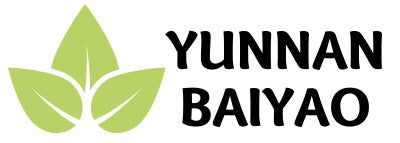
What Causes Nosebleed?
Share

Epistaxis, commonly known as nose bleeding is a typical medical complaint that is rarely life-threatening and can be cured at home. An estimate of 60% of the world’s population had experienced nosebleed in their lives, and only 10% of those are fatal and needs special treatment. Children aged between 2 to 10 years old and adults aged between 50 to 80 years old are more prone to having a nosebleed. Moreover, people who are pregnant, and those who are taking certain types of medicines may also experience epistaxis regularly.
What's with the Nose?
The nose comprises of millions of tiny blood vessels, making it vulnerable to bleeding caused by trauma that ruptures these veins. Epistaxis occurs when any physical damage, certain health conditions or medications damage the blood vessels within the nasal mucosa. The length of each bleeding episode usually depends on its cause. On average, blood may flow in one or both nostrils for a few seconds up to 10 minutes.
There are two types of nosebleeds depending on where it originates. It is significant to have adequate knowledge of this because it provides what treatment to apply for immediate relief. The first type is anterior epistaxis, which occurs directly in front of the nose within the walls of the nostrils wherein the blood flows through the nasal opening. It is the most common type and can be treated at home by sitting up and squeezing the soft part of the nose for about 10 minutes. The second type is posterior epistaxis, which is a rare condition when blood vessels at the back of the nose ruptures and bleeds, sometimes passing through the throat. It is most likely to happen to older adults and may lead to severe blood loss.
Although, most nosebleeds are rarely fatal, witnessing or experiencing sudden or unexplainable nose bleeding can really be frightening. Therefore, it is essential to learn ways on how to prevent it through familiarizing with the causes of nosebleeds.
Here we list the conditions and reasons for bloody nose, as well as some useful tips and remedies for treating epistaxis.
Dry Air
This is the most usual reason for nosebleeds. Exposure to dry environments due to frigid climate or indoor heating system could dry out nasal membranes or the tissue lining of the nose. This drying will cause crusts inside the nose that are itchy and irritating, once scratched or picked will eventually lead to bleeding. Lessen your susceptibility to nose bleeds due to dry air by using humidifiers, maintaining moisture in the nostrils through nasal sprays or saline nasal products, avoiding common irritants like cigarette smoking, and rubbing or blowing too hard.
Nose- Blowing, Picking, Scratching and Rubbing
Since we all know how sensitive and fragile our noses are, overly touching through nose-picking, scratching and rubbing may damage the minuscule blood vessels and lead to nosebleed. Moreover at some point infections and bacteria may enter the bloodstream when your dirty fingernails wound the inside linig of your nose which may cause severe damage and infections. Forceful nose-blowing usually affects the insides of the nose due to its impact and causes epistaxis. The best remedy for this is to try to control contact in your nose, use face mask when you are sensitive to pollutants outside like dust and smoke. When you need to blow your nose, do it carefully and properly - one nostril at a time. Use lubricating spray when there's nasal blockage, instead or unclogging your nose with unsanitary materials, particularly your fingers.
Medications
Taking anticoagulants, aspirin, nonsteroidal anti-inflammatory drugs (NSAIDS) or any types of blood-thinners to prevent blood clots, relieve pain or treat heart ailments oftentimes causes nosebleeds to occur regularly in longer periods since it stops blood clotting. These drugs, whether bought over-the-counter or prescribed a physician have epistaxis as its side effects. Antihistamines and decongestants for high fever, colds, allergies and sinus infection may cause drying of the nasal membranes that might stem-out to epistaxis. The best way to prevent nosebleeds due to medications is to take them only when approved by a healthcare professional and discuss the treatment with the doctor.

Nasal Fracture or Physical Injury
This happens when a sudden physical impact causes the bridge of the nose or septum which is the wall separating the nostrils to break or crack. Light to heavy nasal hemorrhage is a common sign of a broken nose, together with other physical damages like the crooked or bent nose, pain, swelling, bruising around the nasal area. It often happens with a neck or head injury due to accidents. Applying cold compress or ice wrapped in cloth is a typical first aid to stop the bleeding and lessen the damage.
Foreign Objects inserted in the Nose
Unusual items introduced inside the nose could damage nasal lining and rupture blood vessels. This occurrence is common to young children that tend to explore the world through tasting, smelling, feeling or even doing things that can be hazardous. Small toys, buttons, pieces of paper or tissue, erasers, and a variety of foreign objects may end up inside your kid’s noses when left unattended.
Health Conditions
There are a number of illnesses that may cause the nose to bleed. At some cases, epistaxis is a sign of an underlying sickness that needs proper care and treatment. Common colds and allergies usually cause the nose to be itchy and irritated and sometimes lead to bleeding. Allergic rhinitis or hay fever and chronic sinusitis cause inflammation of the nasal membranes and blockage which leads to heavy breathing, sneezing, and nose bleeding.
Blood ailments and disorders such as Leukemia, Hemophilia, Idiopathic thrombocytopenic purpura (ITP) and Thrombocytopenia (Low Platelet Count) usually causes difficulty for blood to clot and leads to moderate to severe bleeding of the nose or other parts of the body.

Vascular diseases and abnormalities that affect arteries and capillaries are considered a reason for old-aged patients to experience frequent epistaxis. Arteriosclerotic vascular disease, vascular neoplasm, hereditary hemorrhagic telangiectasia (HHT), and aneurysm are some ailments in the blood vessels that increase the risk of having nosebleeds.
Hypertension or high blood pressure may sometimes cause epistaxis or worsen it once patients have a history of high BP. Even heart illnesses is also connected to elderlies having regular nosebleeds.Heavy alcohol consumption which is a common culprit for liver and kidney diseases also increases the occurrence of epistaxis because it inhibits the blood’s ability to solidify immediately once damaged.
Having a healthy lifestyle and visiting healthcare providers regularly, especially when inexplicable bleeding may prevent health conditions to aggravate.
Septal Deviation or Abnormality
Nasal obstruction due to deviated septum may cause difficulty in breathing, dryness and eventually epistaxis. This is a prevalent condition, which can be congenital and developed from birth or contracted from injuries. This occurs when the cartilage separating the nasal passage is uneven and may cause blockage to one or both nostrils. Septal deformities that go with recurrent nosebleeds, frequent sinus and breathing problems that won’t respond to medication are usually corrected through surgery.
Tumors
These are abnormal growths around the nasal cavity or passageway within the nose (nasal tumor) OR those that begin in paranasal sinuses or the air-filled chambers inside the nose (paranasal tumor). Nose bleeding can be a manifestation of benign (noncancerous) or malignant (cancerous) tumors developing inside the nose. It is best to have it checked immediately to determine the treatment option for these tumors.
Identifying what causes any illnesses or abnormal physical conditions is the best way to prevent complications and to hinder them from worsening. Nose bleeding, which in most cases not serious must still be treated carefully through proper care and examination by a specialist.
